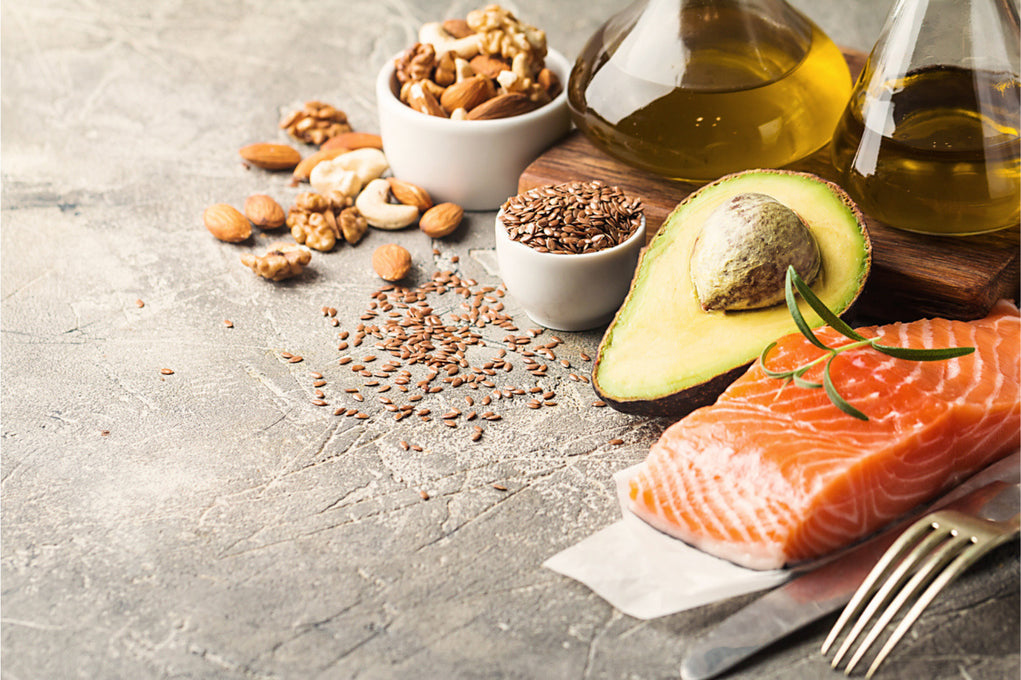Omega-3 - Are we really getting enough?
8th August 2019 / Health
Omega-3 - Are we really getting enough?
Emily Shannon

Omega-3 is one of those tricky nutrients, most of us probably aren't getting enough. It’s likely that people know they aren’t getting enough but it can be hard to know where to get it from. Some of us know that we don't eat enough fish, but are unsure of the alternative sources. The answer to adding more omega-3 into your diet may be simpler than you thought.
Firstly, let’s talk about what omega-3 actually is. Omega-3 fatty acids are a collection of polyunsaturated fatty acids which can help to decrease cholesterol levels and help to reduce inflammation within the body. Omega-3 fatty acids actually come in different forms:
ALA (alpha-linolenic acid) this particular type of omega-3 must be consumed through our diets as we are unable to make it within the body. Generally, it is advised that the best way to consume omega-3 is from sustainable sources of oily fish and white fish. It is always best to ensure that the fish that we buy is certified by the Marine Steward Council (MSC). This will ensure that we are consuming sustainable fish.
EPA (eicosapentaenoic acid) and DHA (docosahexaenoic acid) are long-chain fatty acids that the body is able to make from the ALA in our body. These types of omega 3 are usually found in supplements. Sometimes it can be difficult to acquire sufficient omega-3 fats from food alone, meaning that supplementation may be required.
Alternative sources of omega-3
Many people feel as though they miss out on vital omega-3 fats because they don’t like fish or choose to follow a vegan or vegetarian diet. However, there are a number of rich sources of omega-3 that don’t come from fish.
These include;
- Nuts (including walnuts and pecans)
- Vegetable oils (including rapeseed and linseed)
- Green leafy vegetables
- Avocados
If you are not eating fish then it is important to include a range of these omega-3 rich sources within the diet to ensure that the levels remain adequate.
How much omega-3 should we be eating?
Government guidelines suggest that we should be aiming to eat 2 portions of fish each week, one of which should be oily. There are however no specific dosage recommendations for the general population for omega-3. It can be hard to get the correct amount of omega-3 fatty acids from good-quality, sustainable fish as this can often come with a hefty price tag perhaps another reason why many people reach for omega-3 supplements.
What are the benefits of omega 3?
The primary benefits of omega-3 have been shown in Mediterranean populations. The Mediterranean diet is known to be rich in omega-3. Evidence has shown that diets that are rich in omega-3, has a decreased risk of cancer and cardiovascular disease development. Including omega-3 rich foods in your diet frequently over a prolonged period of time is likely to generate the greatest prevention risk, so it is important to keep your levels topped up.
Sustainability of omega 3
As the main source of omega-3 largely comes from the fish that we consume, it is important to bear is mind where the fish that we are consuming has actually come from. With fish stocks declining for a number of popular species, it is very important to buy fish that you know has come from a sustainable source. As spoken about earlier, you can tell whether the fish that you are busy is sustainable as it it will be MSC certified, this should be displayed on the packaging.
Omega-3 supplements
People who think they are deficient in omega-3 may decide to take omega-3 supplements. There are a few things to watch out for when looking for an omega-3 supplement as they are not all created equal!
If you do decide to take an omega-3 supplement there are a number of things to keep an eye out for. Firstly, be sure to take pure omega-3-fish oil, rather than fish liver oil as this won’t provide you with all of the benefits that you can get from omega-3 itself. Secondly there is some evidence to suggest that larger fish that are higher up the food chain typically contain higher levels of heavy metal contaminants. Link’s omega-3 fish oil uses only small fish (anchovies and sardines) to ensure there is no heavy metal contamination.
Best fish sources of omega-3
There are a number of sources of omega-3, however the best sources of oily fish are:
- Sardines
- Salmon
- Mackerel
- Pilchards
- Herring
It is perhaps important to note that both fresh and tinned tuna do not count as oily fish.
Some examples of white fish that contain omega-3 include;
- Cod
- Haddock
- Pollock
- Plaice
- Coley
- Red Mullet
Further Reading
From The Blog
-

25th February 2025 / Health
Empowering Women’s Health: Key Supplements for Well-being
Women’s health is a lifelong journey, with each stage presenting unique nutritional and wellness needs. From maintaining energy levels to supporting hormonal balance and bone health, the right comb...
Read article -

17th February 2025 / Health
Empowering Women’s Health: Lifestyle Tips and a Key Supplement for Perimenopause and Menopause
NaomiWomen’s health evolves through various life stages, and the transition into perimenopause and menopause brings unique challenges. During these phases, hormonal fluctuations can lead to symptom...
Read article -

10th February 2025 / Health / Products
The Best Foods and Drinks to Help Your Body Recover from Burnout
Burnout is a growing issue in today’s fast-paced work culture, leaving many people feeling exhausted, overwhelmed, and depleted. While rest and self-care are essential, nutrition plays a crucial ro...
Read article



